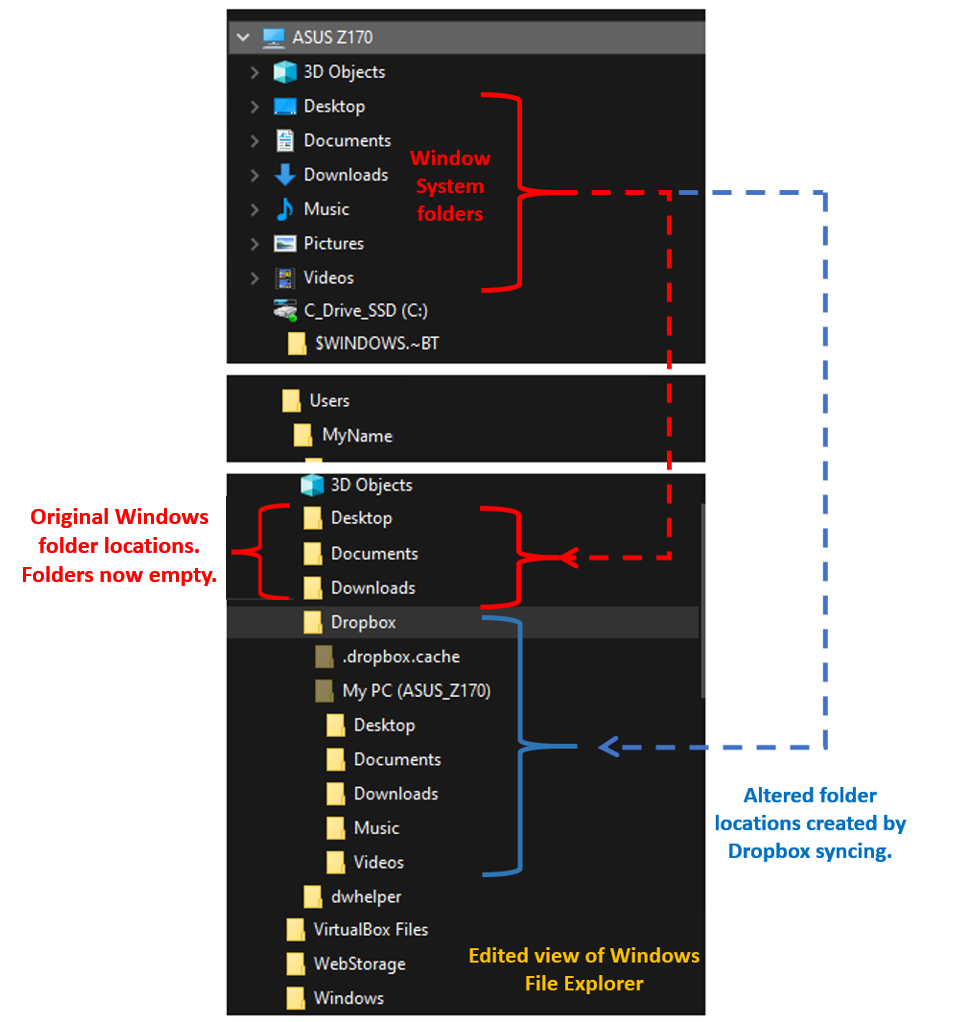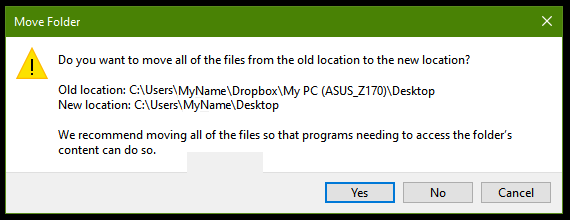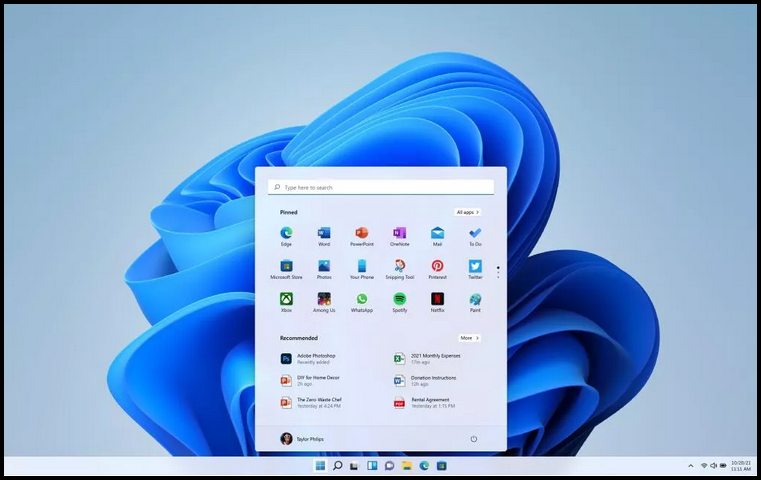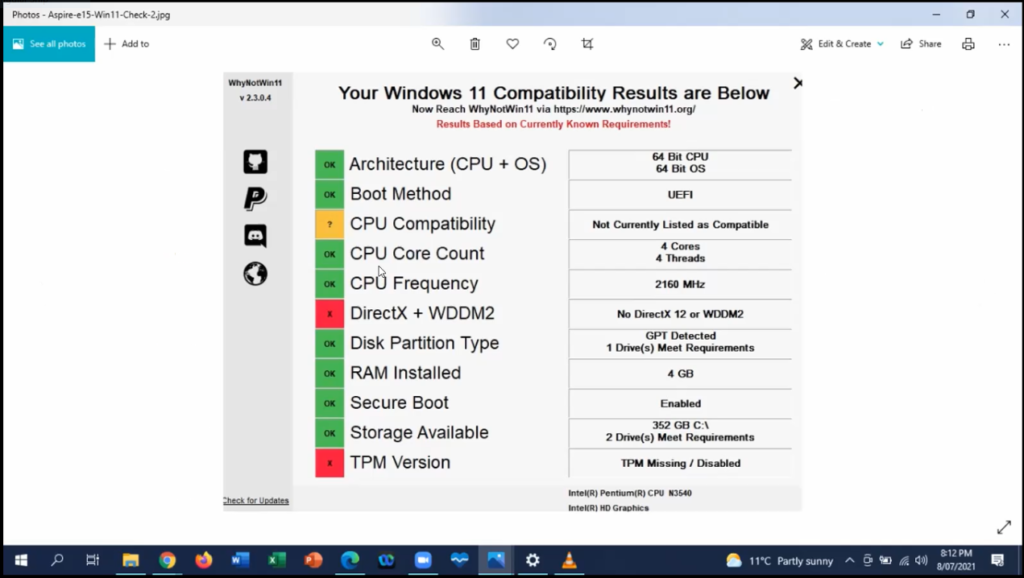East SIG Report July 2021
28th August 2021
Neil Muller
Host Paul Woolard opened the July meeting, again with all members back at home joining the meeting via Zoom. The first presentation of the night was George Skarbek presenting his normal Q&A segment.
Q. I have a question on Dropbox. I installed Dropbox a number of years ago to send large files to someone. Being unfamiliar with how Dropbox works, I selected the sync option, thinking Dropbox was only going to sync the files I downloaded to it. About 12 months later, I started to receive emails from Dropbox warning me that my Dropbox was full. I ignored those emails as I hadn’t added any files to Dropbox recently.
Sometime later I discovered Dropbox was syncing all my desktop files, documents, downloads, music and video folders. This explained the reason I was receiving the warning emails that my Dropbox was full. When I discovered the extra syncing, I uninstalled Dropbox, but still the emails kept arriving.
This made me look at Windows File Explorer and I discovered Dropbox had moved the location to those five folders (i.e. desktop, documents, downloads, music and videos) to a new Dropbox folder shown in Figure 1 in blue.
I would like to remove all traces of Dropbox from my PC and return my system to as it was before I installed Dropbox. I’m not confident I know how to approach this safely and would appreciate your advice. What do you recommend I do?

Figure 1 – Dropbox syncing changes to Windows folder structure
-
I’ve heard of those problems from other people and I’ve encountered that myself. I’d used Dropbox in the past to sync photos from my phone so I wouldn’t have to use a cable to download them to my PC. Sometime later and without my authorisation, Dropbox started synchronising files like you mentioned. I then made sure Dropbox didn’t start, rather than uninstalling it like you did.
For downloads, which are normally through a browser, I would go to the browser settings and direct downloads to C:/Users/MyName/Downloads. For the other programs I don’t know. You may have to search Professor Google to see if there is a way to restore the default locations for the other applications.
A word of warning for someone thinking of deleting all the stuff stored in the cloud. “You have to absolutely, be positively certain, beyond any shadow of doubt whatsoever, that you’re not deleting everything from your drive C.” I know of people who have lost everything thinking it’s only Dropbox, these are all backup, no, they were all originals from drive C. An awful lot of caution, checking and rechecking is needed before you start deleting the contents of a Dropbox.
The solution turned out to be fairly simple. However, all due care was exercised by the user as George suggested. By right clicking on the Windows “Desktop” System Folder (shown in Figure 1), select “Properties” then “Location”. Next select “Move” and direct the Desktop folder from the Old Location (i.e. the Dropbox folder) to the correct New Location (Figure 2). After selecting “Yes” all desktop icons and files are moved to their original Windows locations. The same process is then repeated for the remaining System Folders, Documents, Downloads, Music and Videos. Note for this user the Pictures System folder had previously been moved to D:/Pictures.

Figure 2 – Returning Dropbox changes to Original Windows folder settings
Following Q&A, Frank Maher played a video on smartphone camera setting, that he felt would be of interest to members. Although the video applies to Samsung smartphones, some of the settings mentioned will be relevant to all brands. The YouTube video titled “5 Important Camera settings all Samsung Galaxy Owners need to Change ASAP”, can be found at https://tinyurl.com/cbhjbamx.
The first setting recommended users change was to turn on “Tracking auto-focus”. This feature retains focus on moving objects and is particularly useful when taking videos. “Tracking auto-focus” can also be used for still photography when the subject is moving. This is a feature only available with newer model Samsung phones, but is one many users may have overlooked. When using “Tracking auto focus” it only works on certain resolutions and when the video stabilizer is turned off, as both cannot work simultaneously.
When taking photographs, “Location tags” was another setting the reviewer covered that should be turned on. With both “Location tags” turned on and Samsung’s gallery application set to “show info”, numerous display options for the meta data were available, when reviewing photographs in the photo Gallery. The video covered this feature in detail, due to the varying options available when displaying photos and their metadata in Photo Gallery. When selecting a photo and scrolling down, in addition to the metadata, a Google map showing where the photo was taken is displayed.
Other settings recommended to change were:
- Enabling “Grid lines” to use for centring a photo, to correctly set the horizon or taking photos using the rule of thirds.
- Turn on “Voice control” for taking photos and videos by using certain voice commands.
- Rearranging the camera’s on-screen modes, to suit a user’s requirements.
The final presentation of the night was by Dave Botherway who looked at the preview edition of the new Windows 11. First up Dave played a shortened version of the “Microsoft Windows 11 Reveal Event” presentation at https://tinyurl.com/3k5x7yhw
Key features of the Windows 11 preview version are:
-
A new centre-aligned Taskbar and Start button
-
A new design for the Start menu
-
New look File Explorer
-
Upgraded widgets
-
Auto HDR for gaming
-
Snap layout options for windows. (Easier to use than Fancy Zones in PowerToys)
-
Better connection when using a second display
-
A redesigned Settings interface
-
A new Windows Store.
-
Android apps will run on Windows 11. These will be available in the Microsoft Store via Amazon, but not apps from the Google Play store.
-
Hardware requirements:
-
Requires a computer running Intel’s sixth or seventh-generation CPU. At the time of the announcement lower powered CPU’s will not be able to update to Windows 11.
-
Computers will need Trusted Platform Module (TPM) version 2.0
-
Computers will need UEFI, Secure Boot capable.
-
DirectX 12 compatible graphics / WDDM 2.x Graphics card
-
-
Refer to https://tinyurl.com/yst6c8a9

Figure 3 – Windows 11 Start menu
Following the video, Dave discussed some of the criticisms the Windows 11 announcement has received. Moving the Start button to the centre bottom of the screen was one, but the major criticisms were with the hardware requirements. Dave used a Microsoft app called “PC Health check” to determine whether the notebook PC he was presenting on would run Windows 11. However, at the time of his presentation, Microsoft had removed the app. This followed criticism acknowledging the app was ‘not fully prepared’ as it didn’t explain why a PC was unable to run Windows 11, but simply displayed “This PC can’t run Windows 11”.
As a result of Microsoft taking the “PC Health check” app offline, third party developers have produced a program called “WhyNotWin11” which Dave demonstrated on his presentation notebook.

Figure 4 – “WhyNotWin11” Results Window
After running “WhyNotWin11”, most users have found that apart from the CPU requirements, they lacked either Secure Boot or the TPM version 2 module. Both Secure Boot and TPM version 2 are the current requirements, but Dave believes these may change as a result of beta testing by members of Windows Insider program.
For those users wishing to run Windows 11, the TPM module is probably the requirement that most current PCs will have problems with. To explain TPM in more detail, Dave played a video titled “TPM 2.0 Support Required for Windows 11”. The video at https://tinyurl.com/h4kxy4tm explains that TPM is needed to improve security, by providing hardware level encryption. On many PCs TPM will be turned off by default, as its currently unnecessary, but can be turned on in the BIOS.
Dave enlarged on the video noting that if a PC didn’t have TPM 2.0 on the motherboard, a module would need to be purchased. If the appropriate slot is available, the modules could be slotted into the motherboard. Before Windows 11 was announced, these modules could be purchased for around US$15. Now due to demand the price has risen to over US$100.
Windows 10 will be supported till 2025 and is likely to run concurrently with Windows 11. It’s believed the upgrade from Windows 10 to 11 will be free. Dave felt Windows 11’s main attraction is increased security, rather than the more modern softer appearance. Dave plans to stick with Windows 10 until he gets a new PC. He also believes the final edition is likely to look different to the preview edition, most likely with different hardware requirements.
The meeting concluded with informal discussions between audience members.


